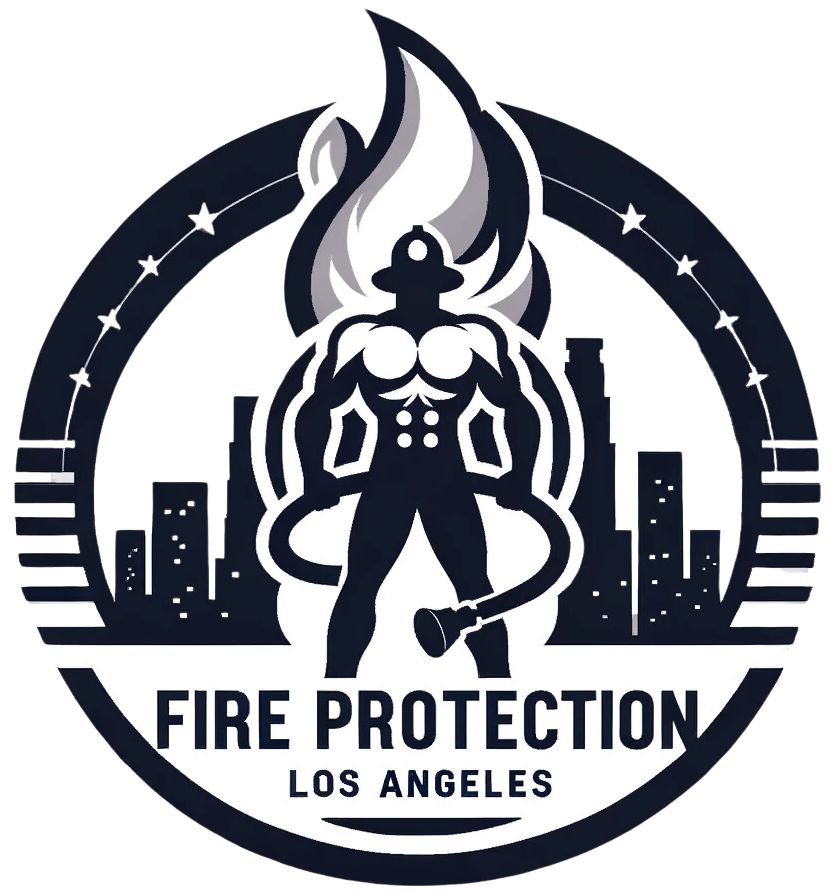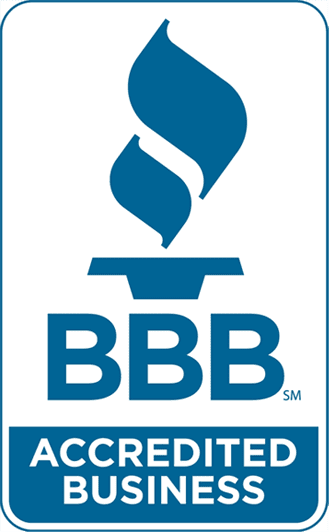Understanding the costs of fireproofing a home is essential for improving safety against wildfires. Basic measures, such as retrofitting with fire-resistant materials, can range from $2,000 to $15,000, while extensive renovations might reach $100,000. Specific upgrades, like roof modifications average around $5,860, and landscaping changes add roughly $2,570. It's important to recognize that using fire-resistant materials may slightly increase costs but can greatly enhance protection. Investing in fire safety not only reduces future repair costs but also potentially lowers insurance premiums. We can explore various strategies to make our homes more resilient and safe against wildfires together.
Overview of Fireproofing Costs
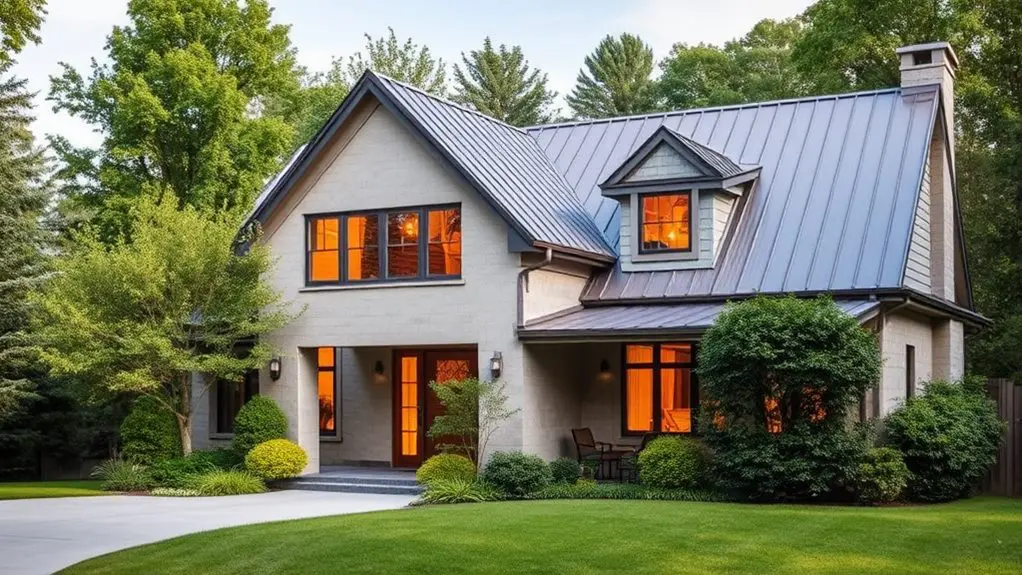
Understanding fireproofing costs is vital for anyone looking to enhance their home's resilience against wildfires. When we consider retrofitting our homes for wildfire resistance, we need to know that costs can vary considerably. Basic improvements might set us back between $2,000 and $15,000, while thorough retrofits aimed at maximum protection could escalate to $100,000.
Implementing measures such as establishing a defensible space around our homes can also impact overall costs but is essential for reducing fire vulnerability.
For specific wildfire-resistant construction features, we can expect approximately $5,860 for roof modifications and around $12,190 for exterior wall upgrades. Additionally, landscaping modifications near our homes can add about $2,570 to our overall expenses, but they effectively reduce fire vulnerability.
Using fire-resistant materials during construction may increase our costs by 2% to 13%. However, some of these materials can be more affordable than traditional options.
Implementing wildfire-resistant measures during the initial construction phase proves to be more cost-effective than retrofitting our homes later. Not only do these measures enhance our protection, but they can also lead to long-term savings on maintenance and insurance premiums.
Retrofitting for Wildfire Resistance
Retrofitting our homes for wildfire resistance is an essential step in protecting our properties and loved ones. By using wildfire-resistant materials, we can greatly enhance our home resilience against devastating fires.
Implementing a defensible space around our homes is also important, as it can considerably reduce the risk of fire spreading. The retrofitting costs can vary widely; simple measures like installing flame-resistant vents and using noncombustible mulch may only set us back between $2,000 to $15,000. However, a thorough retrofit for maximum protection can approach $100,000.
As homeowners, we can also take free actions to improve our fireproofing efforts. For instance, removing flammable materials and debris from roofs can make a notable difference without incurring extra costs.
It's crucial to understand the financial implications of these retrofitting costs, as they stem from an analysis of construction expenses and building techniques. By following firewise practices, we can further enhance our home's defenses against wildfires.
For those looking to make informed decisions, detailed cost estimates and methods for retrofitting homes are available in extensive reports. By considering these strategies, we take proactive steps toward safeguarding our homes and families from the threat of wildfires.
Investing in wildfire resistance not only protects our properties but also brings peace of mind during fire season.
Importance of Community Safety
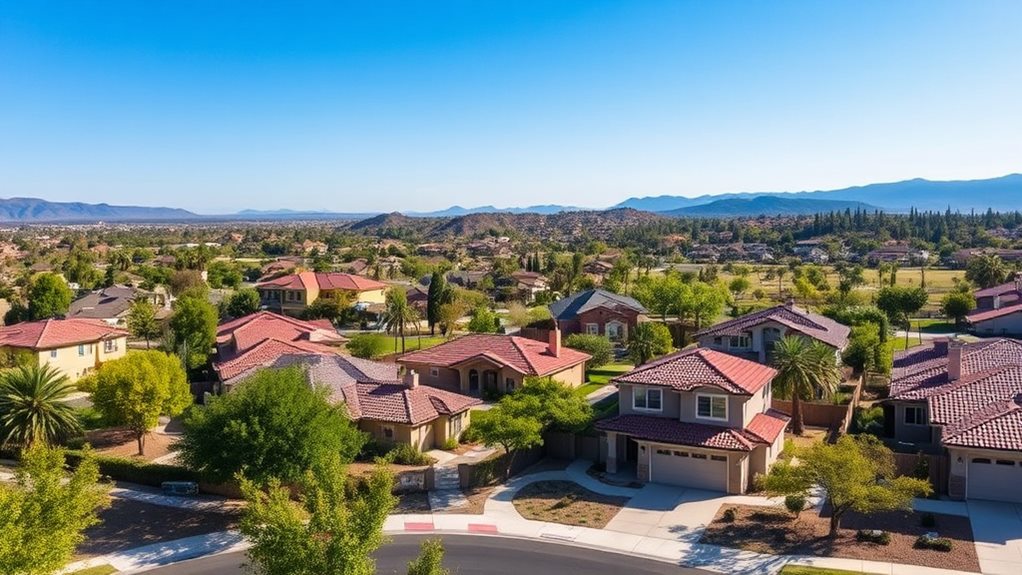
We all know that wildfires can lead to massive losses for our communities, costing us billions each year.
By focusing on community safety, we can protect our homes and investments, making them more resilient against these disasters.
Implementing proactive measures such as community education on fire safety protocols can further enhance our preparedness.
Together, we can explore effective strategies to engage our community in wildfire prevention and guarantee a safer environment for everyone.
Economic Impact of Wildfires
Wildfires can have devastating economic impacts on communities, costing taxpayers and local governments hundreds of billions of dollars each year. These costs highlight the urgent need for effective fire prevention measures.
By investing in wildfire mitigation, we can save our homes and reduce disaster recovery expenses. Implementing a thorough fire safety plan that includes the use of fire-resistant materials can greatly mitigate risks and financial burdens during fire events, particularly in fire-prone areas, as emphasized in fireproof building materials and insulation.
Consider these key points about the economic impact of wildfires:
- Retrofitting homes to be fire-resistant can greatly lower damage during wildfires.
- California's Wildfire Mitigation Program provides grants to help homeowners make their properties safer.
- Stronger building codes can enhance community safety and resilience against wildfires.
As more residents move into fire-prone areas, it's essential that we prioritize retrofitting our homes and adhering to wildfire-resistant building codes.
By doing so, we not only protect our homes but also promote community resilience. Policy reforms and financing strategies are vital to minimize disaster-related costs associated with wildfires.
Ultimately, investing in fire safety now can save us considerable costs later, ensuring our communities remain strong and secure in the face of natural disasters. Together, we can work towards a safer future for everyone.
Community Engagement Strategies
A strong sense of community can considerably enhance safety measures against wildfires. By working together, we can implement wildfire-resistant building codes that guarantee homeowners and builders use the right building materials and design practices. This collaboration helps us create a safer environment, especially in fire-prone areas.
Retrofitting homes to withstand wildfires not only protects individual houses but also promotes community resilience. Programs like the California Wildfire Mitigation Program offer valuable financial assistance to support these efforts. By taking advantage of these resources, we can strengthen our neighborhoods and reduce the overall damage caused by wildfires.
Moreover, effective policy reforms are essential in enhancing community safety. We must advocate for policies that prioritize funding and resources for wildfire prevention. When we unite as a community, we can make a significant difference in protecting our homes and loved ones.
Let's encourage our neighbors to participate in safety workshops and share information about available financial assistance. Together, we can build a safer future by fostering a culture of preparedness and resilience, guaranteeing that we're all ready to face the challenges posed by wildfires.
Key Strategies for Home Improvement
When it comes to improving our homes for fire safety, we can start with effective retrofit techniques and smart landscape safety practices.
By using fire-resistant materials for our walls and decks, and creating a safe zone around our homes, we can greatly lower our risk.
Regular maintenance, like clearing debris and keeping gutters clean, also plays a key role in protecting our homes from wildfires.
Effective Retrofit Techniques
To effectively enhance our homes against fire threats, we can implement several key retrofit techniques.
These strategies not only improve our home's wildfire resilience but also reduce our fire vulnerability. Here are three effective approaches:
- Upgrade exterior walls with fire-resistant materials, like fiber-cement siding, which can save us around $12,190 compared to traditional cedar plank siding.
- Install ember-resistant roofing, which might add about $5,860 to our construction expenses but greatly boosts safety.
- Create a noncombustible zone of at least 5 feet around our homes through landscaping modifications, costing around $2,570, yet essential for lowering fire risk.
Additionally, we can take free maintenance actions, like cleaning gutters and removing flammable debris, to enhance home safety.
It's also important to focus on deck intersections, as they can be vulnerable to ignition from embers.
By implementing these retrofit techniques, we can make our homes more secure and better prepared against fire threats.
Let's work together to guarantee our homes are safe and resilient against wildfires!
Landscape Safety Practices
Creating a fire-safe landscape is vital for protecting our homes from wildfire threats. To enhance landscape safety, we should use fire-resistant materials like gravel or rock instead of flammable options such as bark mulch.
Establishing a noncombustible zone of at least 5 feet around our homes greatly minimizes fire vulnerability and helps prevent ember accumulation.
Regular maintenance is important. We need to remove debris and flammable materials from roofs and gutters to keep our homes safe.
Upgrading landscaping features can also improve resistance to wildfires; for instance, opting for metal fencing instead of wood can make a big difference.
Additionally, incorporating irrigation systems is a smart move. Healthy plants are less flammable, and well-watered landscaping can act as a barrier against wildfire threats.
Legislative and Regulatory Challenges
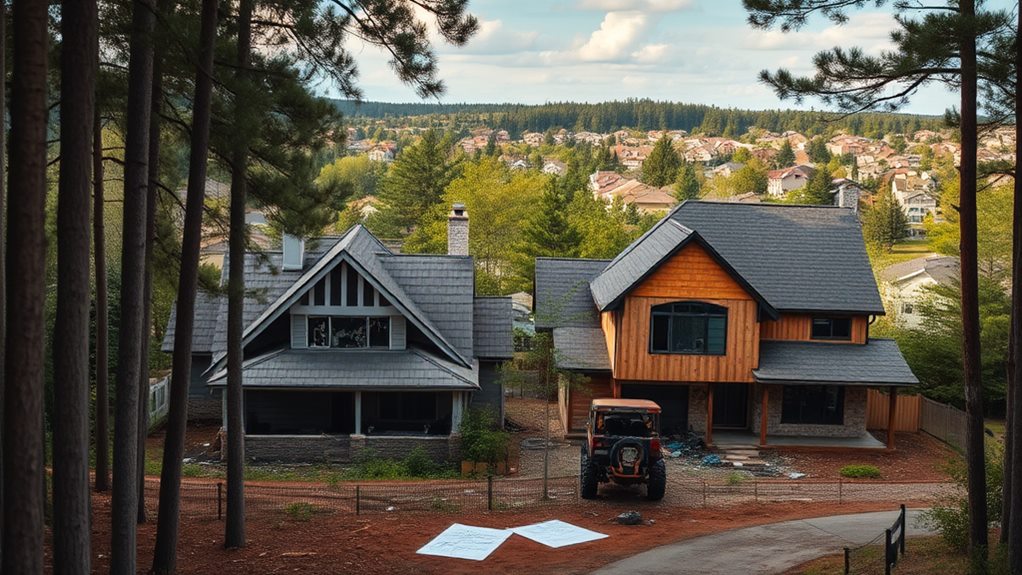
Amid growing concerns about wildfires, we face significant legislative and regulatory challenges in establishing consistent building codes aimed at fire resistance. Currently, only Nevada, Utah, and Pennsylvania have statewide wildfire building codes, leaving many regions without regulations that enforce fire-resistant construction practices. This inconsistency can lead to confusion and increased vulnerability for homeowners.
Some key challenges include:
- The absence of a uniform statewide building code in states like Colorado, which results in varying local regulations.
- Homebuilders advocating for local control over building codes, citing the perceived cost of implementing thorough regulations.
- Opposition to statewide codes due to financial burdens on both homeowners and builders.
States like Oregon are beginning to recognize the need for new wildfire standards, but progress is slow. Without thorough regulations, we risk leaving many homes unprotected against wildfires.
It's essential for us to advocate for effective wildfire building codes that prioritize safety while addressing the concerns of homebuilders. By focusing on fire-resistant materials and practices, we can work together to create a safer living environment for everyone, even as we navigate these complex legislative and regulatory challenges.
Benefits of Fire-Resistant Homes
Fire-resistant homes offer numerous advantages that extend beyond mere safety, providing us with financial and long-term benefits. One major advantage is the potential reduction in insurance premiums. In California, for instance, insurers often give discounts for homes that implement fire-proofing measures, which can help us save money.
Additionally, installing fire-resistant materials during construction is usually more cost-effective than retrofitting existing homes, adding only 2%-13% to overall construction costs.
Homes built to wildfire-resistant codes are 40% less likely to be destroyed by fire compared to older homes lacking these protections. This not only enhances our safety but also contributes to community resilience against future wildfire threats.
The long-term benefits of fire-resistant construction include reduced maintenance costs and possible savings on energy bills due to improved energy efficiency.
Ultimately, investing in fire-resistant features represents a proactive investment for homeowners. By choosing to build or upgrade to fire-resistant homes, we not only secure our properties but also contribute positively to our neighborhoods, creating safer and more resilient communities for everyone.
Industry Trends and Insights
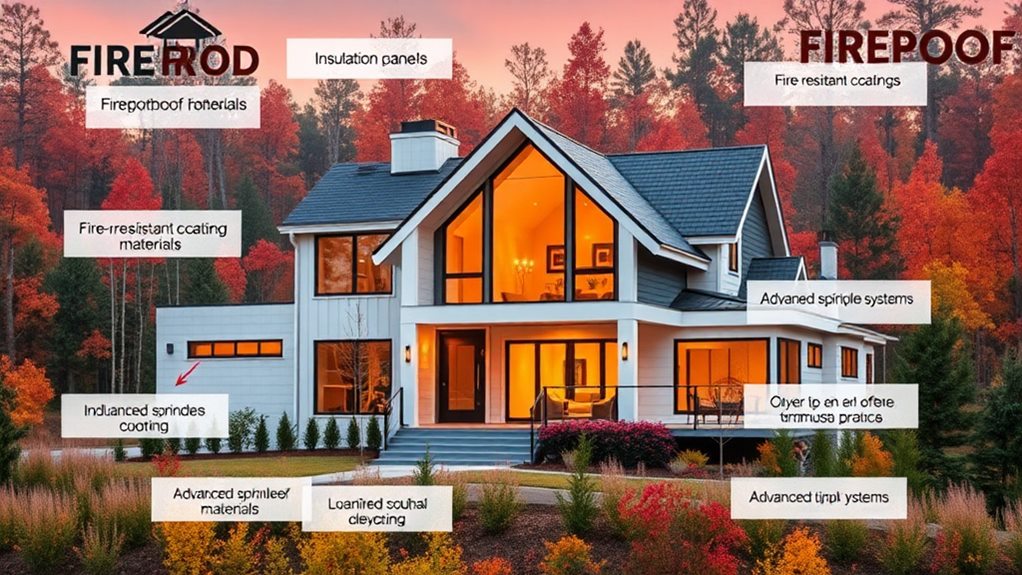
As we explore the financial and community benefits of fire-resistant homes, it's important to recognize the evolving landscape of fireproofing practices within the industry.
Recent reports show that making homes more resistant to wildfires can be more affordable than we once thought, with costs for wildfire safety measures varying widely.
Here are some trends we should keep in mind:
- Homeowner discounts: Insurers in California are increasingly offering discounts for those who implement fire-proofing measures, encouraging more homeowners to invest in safety.
- Community engagement: Collaborative efforts among contractors and experts are enhancing safety responses in fire-prone areas, emphasizing the importance of working together.
- Retrofitting homes: Industry professionals stress the value of retrofitting with wildfire-resistant materials, helping to overcome perceived cost barriers.
Final Thoughts
In summary, understanding the costs of fireproofing a home is essential for protecting our families and communities. While the expenses can seem intimidating, investing in fire-resistant materials and strategies can greatly reduce risks during wildfires. We must remember that prioritizing safety not only benefits us but also strengthens our neighborhoods. By staying informed about industry trends and regulations, we can make better choices and create homes that stand strong against potential threats. Let's work together for a safer future.
